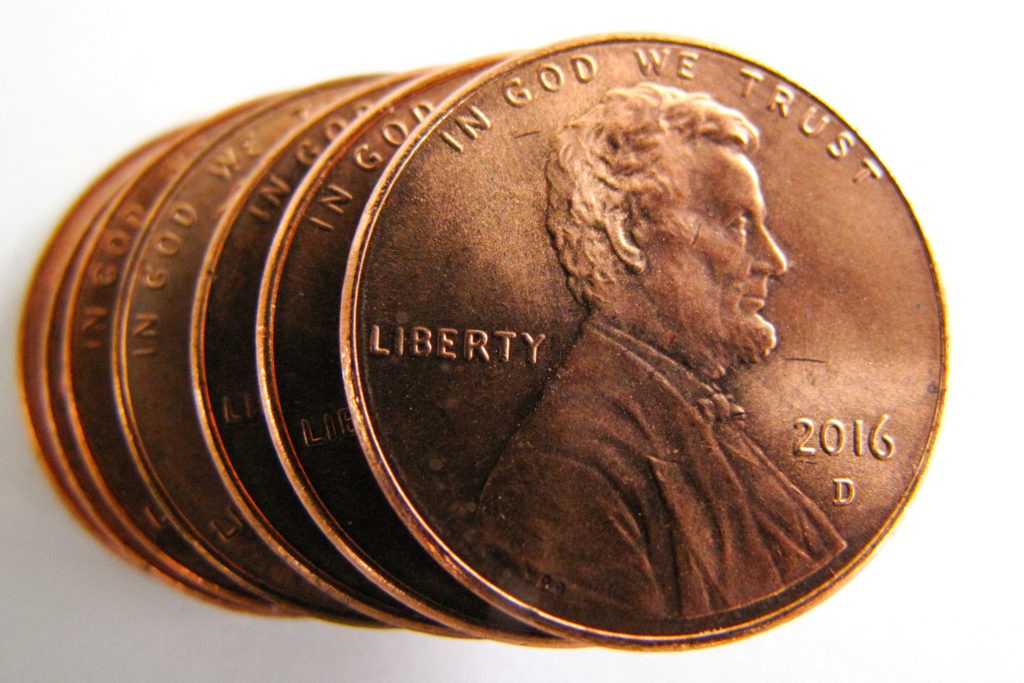Just two days ago, the familiar clink of the penny faded into history at the Philadelphia Mint. United States Treasurer Brandon Beach presided over the ceremonial striking of the very last one-cent coin, marking the end of an era that began in 1793. This moment stirred a wave of nostalgia among staff and onlookers, a quiet goodbye to a coin that has slipped through fingers for generations.
The decision feels both inevitable and poignant, especially in an age where digital wallets hum along without a second thought to loose change. Yet billions of these copper discs still circulate, holding onto their place in the American story. With roughly 300 billion pennies out there, they add up to about $3 billion in quiet economic muscle. Your jar of spares suddenly carries more weight, a tangible link to a simpler time now slipping away.
Why the Penny Finally Met Its Match
Rising production costs sealed the penny's fate, turning what was once a bargain into a persistent drain on resources. The U.S. Mint reports that each new penny now demands 3.69 cents to create, a sharp jump from 1.42 cents in recent years. Every batch minted meant the government edged deeper into the red, a loss that quietly mounted over time.
Economists have watched this unfold with growing urgency, pointing to the penny's drag on efficiency in a cash-light world. Transactions drag on as clerks count out exact change, while apps and cards sweep through in seconds. Robert Whaples, an economist at Wake Forest University, captured the bittersweet relief in his words. "It's time to eliminate the penny. It saves taxpayers money, and year over year those savings add up," he said, his tone laced with the quiet triumph of fiscal common sense amid the coin's sentimental pull.
This shift underscores a larger truth about small costs that snowball. According to analysis reviewed by Finance Monthly, halting production could free up $56 million annually, funds that might ease other pressures on the federal budget. For families juggling bills, it's a reminder that even tiny inefficiencies touch everyone, evoking a shared frustration with systems that outlive their purpose.
Echoes of the Penny in American Life
The penny wove itself into the fabric of daily routines and cultural lore, far beyond its modest face value. Retailers mastered the art of charm pricing, tacking on that final .99 to nudge shoppers toward the register. A $19.99 tag whispers affordability, a psychological trick that has steered billions in spending over decades.
Its footprint stretches into pop culture too, from the swing of penny loafers on city streets to the hopeful tunes of "Pennies from Heaven" on silver screens. Even in quiet moments, it sparked joy, like the thrill of finding a wheat penny in a handful of change. Now, with minting halted, these stories gain a sharper edge, urging us to cherish the coins we hold as relics of resilience and routine.

The U.S. penny, featuring Lincoln’s portrait and the Lincoln Memorial, is retired after 232 years but remains legal tender and part of America’s financial history.
Unlocking Hidden Value: Turn Your Change Jar into a Smart Savings Play
As the mint's presses fall silent, a fresh opportunity emerges for everyday savers to rethink those forgotten pennies gathering dust. The end of production could spark a subtle rise in demand for older, scarcer varieties, transforming pocket lint into potential profit. This isn't about overnight riches, but a savvy way to blend nostalgia with financial smarts in an era of rounding and digital dollars.
Consider the mechanics of scarcity in coin collecting, a hobby that rewards patience over flash. When supply dries up, values often climb, especially for error coins or limited runs that slipped into circulation unnoticed. For instance, a 1943 copper Lincoln penny, mistakenly struck during wartime steel production, now fetches up to $372,000 at auction. That's not fantasy, it's a real payout for the sharp-eyed finder who spotted the anomaly amid the ordinary.
Why should this matter to your wallet right now? Without new pennies flooding in, circulation slows, and that boosts the allure of rarities you might already own. Low-mint coins from pre-1959 wheat designs or doubled-die errors could appreciate 10 to 20 percent in the coming years, according to collector trends. For consumers, this means ditching the old habit of dumping change into a drawer and instead building a mini-portfolio that hedges against everyday inflation.
Here's the actionable edge: Download a free coin-scanning app like CoinSnap or PCGS CoinFacts to snap photos of your stash and get instant valuations. Focus on quick wins, like sorting for 1909-S VDB Lincolns worth $500 or more in fine condition. Start small, aim to appraise 100 coins this weekend, and set aside any standouts for a certified grading service. This move not only uncovers hidden gems but builds a habit of mindful saving, turning impulse buys into intentional wealth steps. In a world racing toward cashless, it's your chance to claim value from the past before it vanishes entirely.
Pennywise Queries: What Readers Want to Know Next
What Happens to the Billions of Pennies Still in Circulation After Minting Stops?
Existing pennies remain fully legal tender, ready for spending or saving without a hitch. Banks will accept deposits as usual, and retailers can keep using them for exact change until wear and tear naturally thins the herd. This vast pool, valued at around $3 billion, ensures smooth transitions for cash users. Over time, though, expect gradual fading as digital payments dominate, potentially easing the emotional tug of letting go while preserving their role in piggy banks and tip jars across the country.
How Will Everyday Prices Change Without New Pennies Being Made?
Businesses may adopt voluntary rounding to the nearest nickel for cash sales, a practice already common in places like Canada since 2013. Most experts predict minimal impact, with ups and downs balancing out over thousands of transactions. Consumers could see a net savings of pennies annually, but vigilance pays off, shop for deals that honor exact pricing, and lean into apps that track rounding effects on your budget for smarter grocery runs.
What Is the Total Value of Pennies in Circulation in 2025?
The estimated worth of all circulating pennies stands at approximately $3 billion in 2025, based on the U.S. Mint's latest figures for about 300 billion coins still active. This collective stash represents untapped liquidity, enough to fund major infrastructure tweaks or bolster community funds if pooled creatively. For individuals, it highlights the power of persistence, as even modest hoards contribute to this national nest egg, offering a heartfelt nod to thrift in uncertain times.















